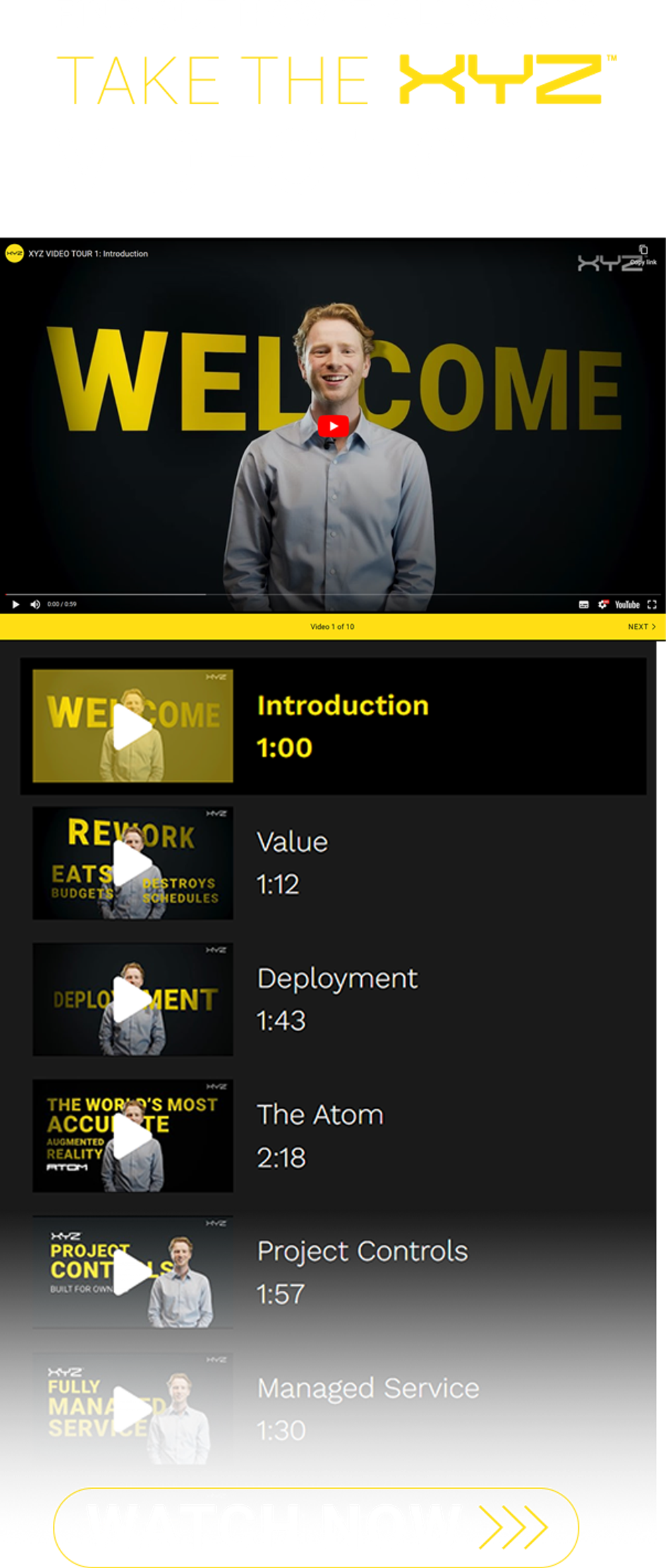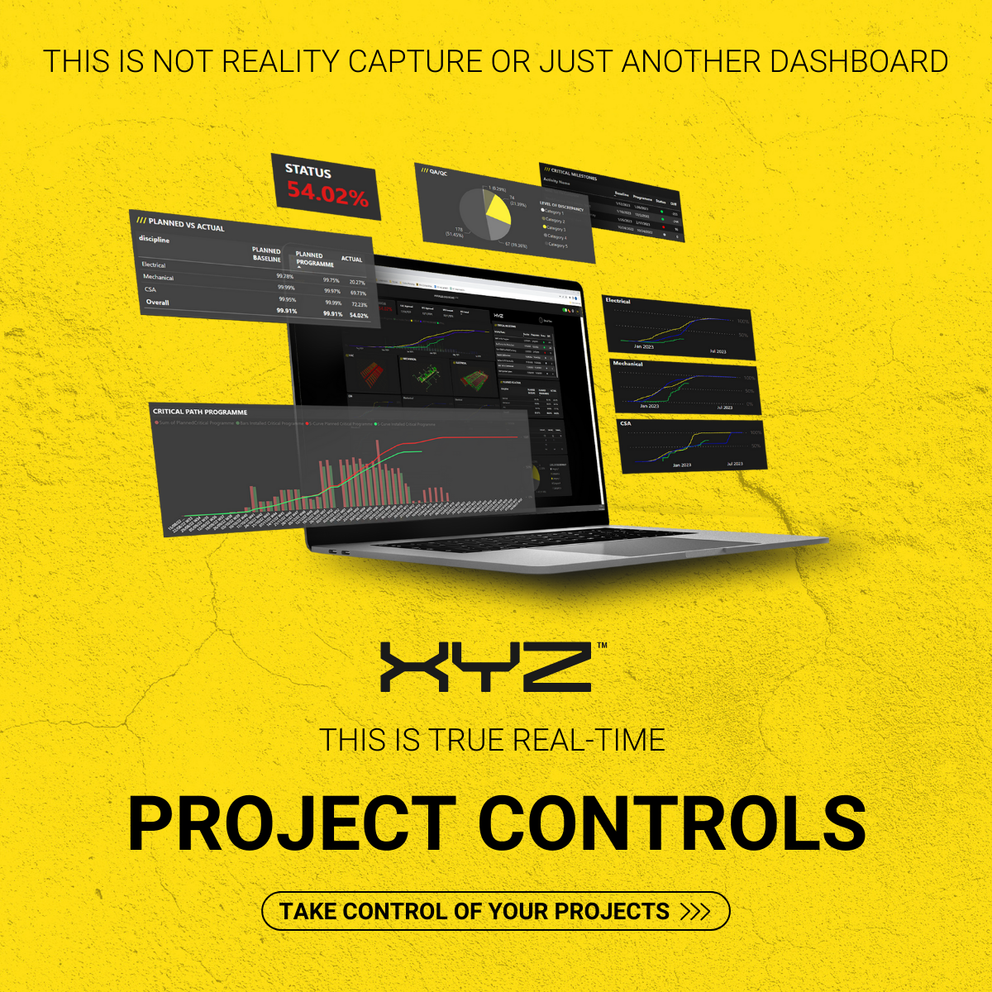-
Services
Services
Find out how we work with our clients and deliver value to construction projects from day one
-
Solutions
Solutions
Discover how all our solutions sync together to deliver construction's most powerful BIM platform to date
-
Built for
Built for
-
Industry
Industry
Understand how we support construction's biggest sectors, and hear from our clients who have experienced the power of XYZ
-
Resources
Resources
Get stuck into all our latest thought leadership, news, reports and industry leading content
-
Company
Company
Dive into what makes XYZ tick, unearth why construction is in our DNA and why we are world leaders in AR solutions

Insights
Solving the construction rework problem: How to prevent errors

16 June 2022
The Get It Right Initiative estimates that 21% of UK construction project value is wasted on rework. A new way of looking at mistakes holds the key to fixing the problem.
In 1998, the Egan Report revealed around 30% of construction activity is rework. Unsurprisingly, these findings were met with alarm and the industry sat up to take notice of the report’s recommendations. Over the following 20-odd years, huge efforts were made to put things right, with a particular focus placed on reducing rework amongst industry leaders, creating integrated processes, and establishing a quality-driven agenda. Despite efforts, the demand for construction, tightening of budgets, and a push to speed up works show the industry hasn't made much progress.
Recent data from the aptly named Get It Right Initiative (GIRI) states that 5% of project value is rework in modern UK construction. Although the industry has made some progress since the days of the Egan Report, rework activities still exceed average project profit margins (3%) and equates to an eye-watering £5 billion each year in the UK alone.
What’s more, it doesn’t tell the full story. GIRI claims that when unmeasured and indirect costs are factored, the actual figure falls somewhere between 10% and 25%. It places its best estimate for the cost of rework at 21% of project value, or £21 billion each year.
Unmeasured and indirect costs include things like unrecorded process inefficiencies, latent defects, quality recognition, and on-site discrepancies. Also, rework comes at an environmental cost too. By eliminating errors, the construction industry could save on embodied carbon within resources as well as transport and construction-related emissions, which would be a giant leap towards 2050 Net Zero targets.
Inadequate planning; late design changes; poor communication and coordination; poor interface management; and a disconnect between the design and construction phases have been identified as the root causes of the rework issue, and GIRI has been doing great work to help the UK construction sector ‘get it right’. According to Autodesk Construction Cloud, 35% of construction professionals’ time is spent (over 14 hours per week) on non-productive activities including looking for project information, conflict resolution, and dealing with mistakes and rework. In a bid to eliminate errors entirely, the group engages in a range of activities such as training and awareness programs to promote systems and processes that can help contractors pre-empt errors.
And this is a crucial point. When systems and tools are set up to retrospectively identify things that have gone wrong, it’s already too late. The damage has already been done, the rework has already become necessary, and the problem is already destined to actualize as a cost.
GIRI talks about a need for attitudinal change and perhaps the best way to frame this is to say that construction needs to take a proactive approach to mistakes.
There is a range of tools available that can help make this happen. Common Data Environments (CDEs) allow information to be shared between project teams and prevent data from becoming ‘siloed’, thus ensuring the right people have access to the right information at the right time. Proactive control workflows abandon the traditional ‘punch card’ approach to quality inspections so that errors are spotted sooner. BIM allows for better visualization in preconstruction and for more efficient project sequencing. And prefabrication means that more work is conducted in highly controlled factory settings, where errors are less likely to arise.
All of these methods bring huge benefits but - even when applied together - they have not been enough to eliminate rework completely. That’s why Engineering-Grade Augmented Reality presents such a huge opportunity for the industry.
PM Group, Cundall, Mace, and many others have already deployed the Atom™, the world’s first Engineering Grade Augmented Reality headset by XYZ Reality. The Atom is being used on complex Mission Critical projects – data centers and pharmaceutical facilities to name a few – across the US, UK, Ireland and Denmark. The headset enables users to view hyperscale 3D models as holograms to millimeter accuracy on-site. This allows for genuinely real-time validation which speeds up the build phase and can eliminate the reactive validation phase altogether. Integrating with Autodesk Construction Cloud’s BIM 360, the Atom has reduced rework activities to less than 1%, saving users time, money, and the planet.
Commenting on the success of the Atom, Barry Madden, Chief Field Engineer, PM Group, said: “The cost saving potential of getting it right, first time are huge. It will be evident from an early stage if there is something wrong. There is no time lag between what you actually see and getting results.”
GIRI says that the industry needs to see rework in a whole new way. The Atom (quite literally) makes that possible.
Get in touch with XYZ Reality today to see for yourself what the Atom can do for you, your projects, and your construction teams.







